Today’s Current Affairs: 16th October 2024 for UPSC IAS exams, State PSC exams, SSC CGL, State SSC, RRB, Railways, Banking Exam & IBPS, etc
Table of Contents
Darwin’s Finches : Recent Study
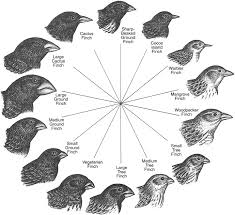
In research published recently, biologists have identified a key connection between ecology and speciation in Darwin’s finches, famous residents of the Galapagos Islands.
- Darwin’s finches, named after Charles Darwin, are small land birds.
- They comprise a group of 15 species endemic to the Galápagos (14 species) and Cocos (1 species) Islands in the Pacific Ocean.
- The group is monophyletic and originated from a common ancestral species that reached the Galápagos Archipelago from Central or South America.
- Descendants of this ancestor on the Archipelago then colonized Cocos Island.
- Darwin’s finches are all very similar in shape, size, and colour, but there are a few differences which can help when identifying them.
- These include diet, habitat, and beak size and shape.
- They’re known for their remarkably diverse beak form and function, evolved to suit the different food types available across the islands.
- From seeds and fruits to invertebrates and even blood, their widely varied beak shapes and sizes have allowed each species to occupy different niches of the islands.
- Darwin’s finches are the classic example of adaptive radiation, the evolution of groups of plants or animals into different species adapted to specific ecological niches.
Haber-Bosch Process:
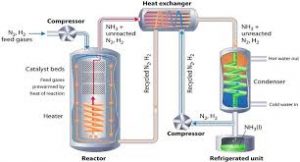
A hundred million tonnes of nitrogen are now removed from the atmosphere and converted into fertilizer via the Haber-Bosch process, adding 165 million tonnes of reactive nitrogen to the soil.
- Haber-Bosch Process is a process that fixes nitrogen with hydrogen to produce Ammonia (NH3)—a critical part of the manufacture of plant fertilizers.
- The process was developed in the early 1900s by Fritz Haber and was later modified to become an industrial process to make fertilizers by Carl Bosch.
- It is considered by many scientists and scholars as one of the most important technological advances of the 20th century.
- It is extremely important because it was the first of the processes developed that allowed people to mass-produce plant fertilizers due to the production of ammonia.
- It was the first industrial chemical process to use high pressure for a chemical reaction.
- It directly combines nitrogen from the air with hydrogen under extremely high pressures and moderately high temperatures.
- A catalyst made mostly from ironenables the reaction to be carried out at a lower temperature than would otherwise be practicable
- The removal of ammonia from the batch as soon as it is formed ensures that an equilibrium favouring product formation is maintained.
- The lower the temperature and the higher the pressure used, the greater the proportion of ammonia yielded in the mixture.
UNICEF : In News

The United Nations International Children’s Fund (UNICEF) has said that Indian suppliers are the third largest provider of organisation’s health and nutrition support to children globally.
- The United Nations International Children’s Emergency Fund (UNICEF) was established in 1946, in the aftermath of World War II.
- It Mandate To help children and young people whose lives and futures were at risk – no matter what role their country had played in the war.
- It works in over 190 countries and territories to protect the rights of every child.
- UNICEF’s work is funded entirely through the voluntary support of millions of people around the world and our partners in government, civil society and the private sector.
- It has received the Nobel Peace Prize in 1965, the Indira Gandhi Prize in 1989, and the Princess of Asturias Award in 2006.
- It publishes important Reports:The State of the World’s Children, The State of the World’s Children reports.
Global Initiatives: - In 2012, UNICEF worked with Save the Children and The United Nations Global Compact to develop the Children’s Rights and Business Principles, and now these guidelines form the basis of UNICEF’s advice to companies.
- UNICEF’s Data Must Speak Initiative (DMS) helps countries unlock existing data to expand access to education and improve learning for all.
- Headquarters: It is headquartered in New York City.
India’s First Demonstration Facility For Biopolymers In Pune:
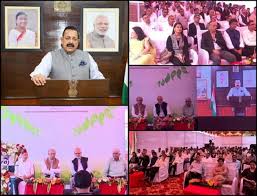
The Union Minister inaugurated India’s first Demonstration Facility for Biopolymers in Pune.
- Biopolymers are materials that have been manufactured from biological sources such as fats, vegetable oils, sugars, resins, and proteins.
- The biopolymers have more complex structures than synthetic polymers therefore they are more active in vivo.
- Furthermore, as biopolymers are biodegradable their decomposition is easily done by bacteria in the soil environment, as compared to synthetic polymers which cause environmental pollution due to incineration.
- They can control the life processes of living organisms and are environmentally friendly.
- They are decomposed by the processes named –oxidation (mainly reaction with oxygen), hydrolysis (decomposition by water) or by some enzymes.
- Some of them are compostable and can show some chemical properties on their surface.
- Biopolymers like polylactic acid, polyglycolate, poly 3-hydroxy butyrate etc. may show plastic properties and instead.
- These polymers can reduce carbon dioxide levels in the atmosphere and also decrease carbon emissions.
- This happens because bio-degradation of these chemical compounds can release carbon dioxide that can be reabsorbed by crops grown as a substitute in their place.
MAHA-EV Mission:

The Anusandhan National Research Foundation announced the launch of the Mission for Advancement in High-Impact Areas -Electric Vehicle (MAHA- EV) Mission.
- MAHA-EV Mission focuses on the development of key EV technologies to reduce dependency on imports, promote domestic innovation, and position India as a global leader in the EV sector.
- It is part of ANRF’s Advancement in High-Impact Areas (MAHA) program designed to catalyze multi-institutional, multi-disciplinary, and multi-investigator collaboration to tackle critical scientific challenges.
- It aims to accelerate technological advancement in key sectors that have a high impact on the nation’s future growth to create a global standing in the area.
- It is concentrating on three critical technology verticals– Tropical EV Batteries and Battery Cells, Power Electronics, Machines, and Drives (PEMD) and Electric Vehicle Charging Infrastructure.
- The mission will enhance domestic capabilities in the design and development of essential EV components.
- It will strengthen competitiveness and position India as a hub for EV component development, driving global competitiveness and innovation.
- By accelerating the shift towards electric mobility, it will contribute to a greener and sustainable future.
Nagarjunsagar-Srisailam Tiger Reserve:

According to the recently released ‘EnviStats India-2024’ report, the Nagarjuna Sagar-Srisailam Tiger Reserve (NSTR) has been ranked first among India’s 55 tiger reserves for its leopard population, with an estimated 360 leopards.
- Nagarjunsagar-Srisailam Tiger Reserve (NSTR) is located in the Nallamala hill ranges(an offshoot of the Eastern Ghats) of Andhra Pradesh.
- This is the largest tiger reserve in the country, spreading over an area of 5937 sq. km.
- It hosts the largest tiger population in the Eastern Ghat
- It is named after two major damsin the area, Nagarjuna Sagar Dam and Srisailam Dam.
- Two wildlife sanctuaries, namely Rajiv Gandhi Wildlife Sanctuaryand Gundla Brahmeswaram Wildlife Sanctuary (GBM), constitute the NSTR.
- The river Krishna traverses through this reserve for a linear distance of around 270 kilometers.
Article 142 : In News
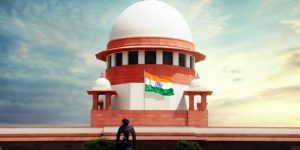
The Supreme Court on Monday (October 14) refused to entertain a PIL seeking directions under Article 142 to include sexual offences against men, trans persons and animals under the newly enacted Bharatiya Nyaya Sanhita (BNS).
- Article 142 of the Indian Constitution holds great significance in the context of the judiciary’s power and its relationship with the legislative and executive branches.
- Article 142(1) states that the Supreme Court (SC) may pass any order necessary to do “complete justice” in any matter pending before it.
- This gives the SC wide discretionary powers to ensure justice is served, even in situations where existing laws might be insufficient or silent.
- Article 142(2) provides the SC the authority to secure the attendance of persons, production of documents, and punishment for contempt of its orders.
Mount Adams:
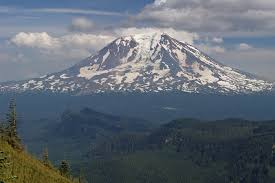
Scientists are trying to establish what caused an unusual spike in earthquakes at the Mount Adams volcano by installing multiple temporary seismic monitoring stations at the site.
- In September, six small earthquakes were recorded at the “high threat” volcano. Normally, it only experiences one earthquake every two to three years, according to the U.S. Geological Survey (USGS).
- Mount Adams is a stratovolcano located in the Cascade Range of the western United States, in Washington State.
- It is the second-highest mountain in Washington after Mount Rainier, with an elevation of 3,743 meters.
- Mount Adams is a stratovolcano, which means it is built up by many layers of hardened lava, tephra, pumice, and volcanic ash. Stratovolcanoes are known for their explosive eruptions.
- It is part of the Cascade Volcanic Arc, a chain of volcanoes in the Pacific Northwest region formed due to the subduction of the Juan de Fuca Plate beneath the North American Plate.
- Mount Adams is considered dormant but not extinct. The last known eruption occurred about 1,000 years ago, and there is still potential for future volcanic activity.
- Research indicates that Mount Adams has produced four lava flows within the last 12,000 years, all of which have remained within a few miles of the volcano.
- The USGS highlights that the greatest risk to nearby communities comes from lahars—muddy flows of rock, ash, and ice—that can occur during both eruptive and non-eruptive phases.
- These lahars have the potential to travel significant distances, with historical flows thought to have reached far from the volcano approximately 6,000 and 300 years ago.
Nobel Peace Prize 2024:
The 2024 Nobel Prize for Peace has been awarded to Nihon Hidankyo, a Japanese organisation of survivors of the Hiroshima-Nagasaki bombings for its “efforts to achieve a world free of nuclear weapons”. The Nobel Peace Prize for 2023 was awarded to the Iranian human rights advocate Narges Mohammadi, who belonged to a minority group. She was awarded for her fight against the oppression of women in Iran and her fight to promote human rights and freedom for all.
S Paramesh, New Chief of Indian Coast Guard:
The Indian Coast Guard has appointed S Paramesh as its new Director General after the unfortunate passing of Rakesh Pal. This appointment is important as the organization aims to maintain strong leadership in maritime security.
SAMARTHAK- The First Ship of Multi-Purpose Vessel:
India’s first Multi-Purpose Vessel (MPV) project ship, built by L&T Shipyard for the Indian Navy, has been launched at L&T Kattupalli. This is a significant achievement for Indian shipbuilding
19th International Conference of Drug Regulatory Authorities (ICDRA):
India is hosting the 19th International Conference of Drug Regulatory Authorities (ICDRA) from 14th to 18th October 2024. This important event brings together health officials and regulatory bodies from over 194 WHO member countries.
WHO Receives $700 Million Pledges for 2025-2028 Budget:
During an event in Berlin, the World Health Organization (WHO) announced it has received $700 million in new funding pledges for its 2025-2028 budget. This is in addition to the $300 million already promised by both the European Union.
5th National Water Awards (NWA), 2023:
The Department of Water Resources, River Development, and Ganga Rejuvenation (DoWR, RD & GR), under the Ministry of Jal Shakti, proudly announces the winners of the 5th National Water Awards (NWA), 2023. These prestigious awards recognize the efforts of individuals, organizations, and institutions across India in water conservation and management.
Mendis and Beaumont Clinch ICC Player of the Month Awards for September 2024:
International Cricket Council (ICC) has revealed the Players of the Month for September 2024, honoring Sri Lanka’s Kamindu Mendis and England’s Tammy Beaumont for their outstanding performances in international cricket. Both players have earned this prestigious recognition for the second time, reflecting their consistency and dominance on the global cricketing stage.
ISRO Chairman S. Somanath Receives Prestigious IAF World Space Award for Chandrayaan-3:
Dr. S. Somanath, Chairman of the Indian Space Research Organisation (ISRO), has been honored with the prestigious International Astronautical Federation (IAF) World Space Award. This accolade was awarded in recognition of the remarkable success of Chandrayaan-3, India’s lunar mission that made history with its soft landing on the Moon’s South Pole.




